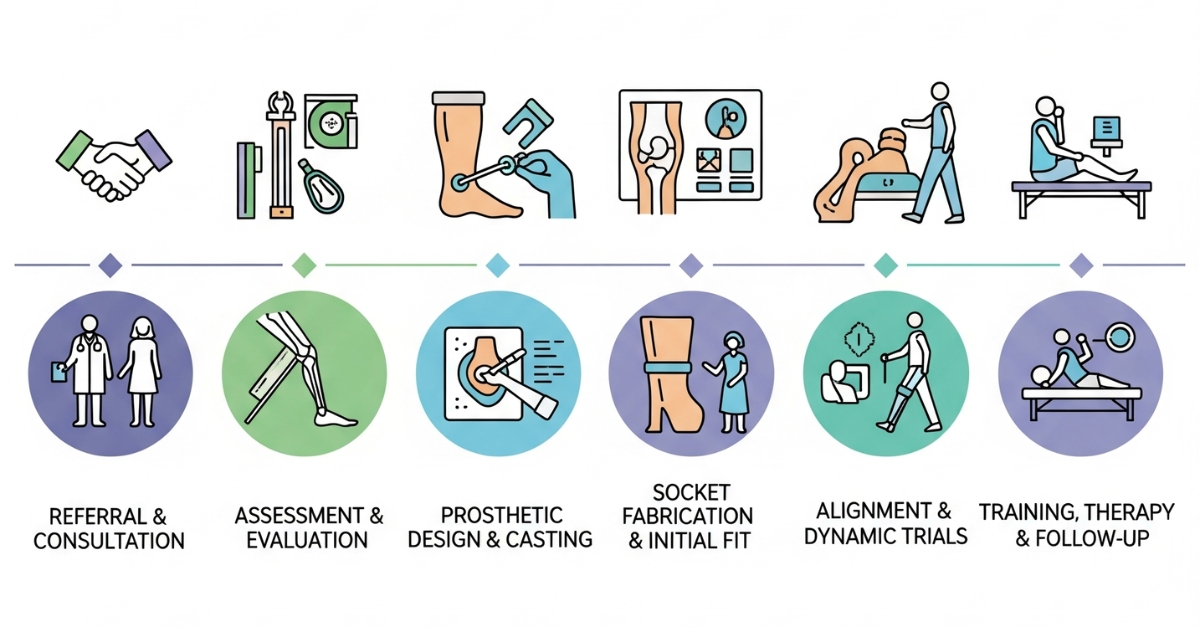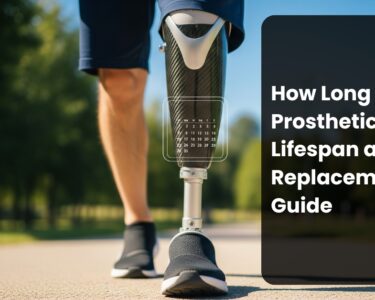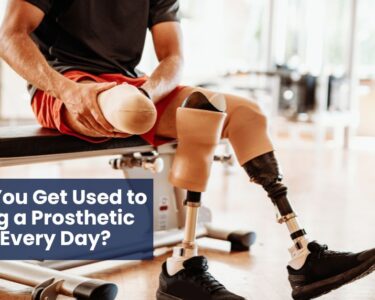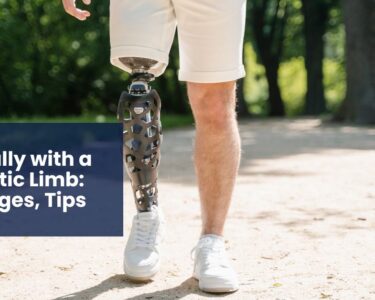Getting fitted for a prosthetic limb is a life-changing journey that requires patience, dedication, and professional guidance. Understanding the step-by-step process can help reduce anxiety and set realistic expectations for your prosthetic journey. This comprehensive guide walks you through each phase of prosthetic fitting, from initial consultation to final fitting.
Initial Consultation and Assessment (Week 1-2)
Your prosthetic journey begins with a thorough evaluation by a certified prosthetist. During this critical first phase, your healthcare provider will assess your residual limb’s condition, measure dimensions, and evaluate your overall health status. The prosthetist examines skin integrity, muscle strength, joint mobility, and any existing medical conditions that might affect prosthetic use.
This initial assessment also includes discussing your lifestyle goals, activity level, and specific functional needs. Whether you’re an active athlete or someone seeking basic daily mobility, these conversations help determine the most appropriate prosthetic design and components for your unique situation.
Healing and Preparation Phase (Weeks 2-12)
Before prosthetic fitting can begin, your residual limb must heal completely from surgery. This healing period typically ranges from 6-12 weeks, depending on your individual recovery rate and any complications. During this time, you’ll work with physical therapists to maintain strength and flexibility in surrounding muscles.
Proper wound care and swelling management are crucial during this phase. Your healthcare team may recommend compression garments, elevation techniques, and gentle exercises to promote healing and prepare your limb for prosthetic use. Regular follow-up appointments ensure your recovery progresses smoothly.
Casting and Measurements (Week 12-14)
Once your residual limb has healed sufficiently, the prosthetist creates a detailed cast or takes digital measurements. This process involves wrapping your limb in casting material or using advanced 3D scanning technology to capture precise dimensions and contours.
The casting process is painless but requires you to remain still for 10-15 minutes while the material sets. This mold becomes the foundation for creating your custom prosthetic socket, ensuring proper fit and comfort. Modern digital scanning methods offer increased accuracy and faster processing times.
Socket Creation and Initial Fitting (Weeks 14-16)
Using your cast or digital measurements, the prosthetist fabricates your custom prosthetic socket. This crucial component must fit snugly without causing pressure points or circulation problems. The initial socket fitting allows the prosthetist to assess comfort, alignment, and functionality.
During this appointment, you’ll try on the socket and provide feedback about pressure points, comfort levels, and any concerns. Minor adjustments are common and expected. The prosthetist may need to modify the socket multiple times to achieve optimal fit and function.
Prosthetic Assembly and Alignment (Weeks 16-18)
After socket approval, your prosthetist assembles the complete prosthetic limb, including appropriate joints, feet, or hands based on your specific needs. Proper alignment is critical for comfortable walking and natural movement patterns.
The alignment process involves adjusting various components to match your body mechanics and gait pattern. Your prosthetist uses specialized equipment to ensure the prosthetic works harmoniously with your remaining anatomy. This technical process requires expertise and precision to achieve optimal results.
Training and Gait Education (Weeks 18-24)
Learning to use your new prosthetic requires professional training and practice. Physical therapists specializing in prosthetic rehabilitation guide you through progressive exercises and mobility training. Initial sessions focus on basic balance, weight-bearing, and simple movements.
Advanced training includes walking on various surfaces, navigating stairs, and performing daily activities. The duration of training varies significantly based on your amputation level, overall fitness, motivation, and learning pace. Most patients require 4-8 weeks of intensive training to achieve confident prosthetic use.
Follow-Up Care and Adjustments (Ongoing)
Regular follow-up appointments ensure your prosthetic continues meeting your needs as your body adapts. Your residual limb may change shape over the first year, requiring socket modifications or replacements. Typical follow-up schedule includes appointments at 2 weeks, 1 month, 3 months, and 6 months post-delivery.
Ongoing care includes monitoring skin health, checking prosthetic components for wear, and making necessary adjustments. Most prosthetic components require replacement every 3-5 years, depending on usage and wear patterns.
Timeline Expectations
The complete prosthetic fitting process typically takes 3-6 months from initial consultation to independent use. Factors affecting timeline include healing rate, complexity of prosthetic design, insurance approval processes, and individual adaptation speed. Upper extremity prosthetics generally require shorter fitting periods compared to lower extremity devices.
Understanding this timeline helps set realistic expectations and reduces frustration during the process. Remember that each person’s journey is unique, and patience during the fitting process ultimately leads to better long-term outcomes and satisfaction with your prosthetic device.
Professional Prosthetic Care
Working with experienced prosthetic professionals is essential for achieving optimal outcomes. Certified prosthetists have specialized training in biomechanics, materials science, and patient care. When selecting a prosthetic provider, look for facilities that offer comprehensive services from initial consultation through ongoing maintenance.
For expert prosthetic care and support throughout your fitting journey, consider consulting with established providers like Protech Ortho, who offer comprehensive prosthetic services and personalized patient care to help you achieve your mobility goals.
Disclaimer:
This content is for informational purposes only and should not replace professional medical advice. Always consult your prosthetist or healthcare provider for personalized recommendations.








